Linhas de Pesquisa
A Nanociência & Nanotecnologia (N&N) e os Materiais Funcionais Avançados (MFAs) formam uma base estimulante e profícua não só para inovações tecnológicas, mas também para o avanço da fronteira do conhecimento. N&N juntamente com MFAs são considerados a plataforma tecnológica do século XXI a qual irá desempenhar um importante papel na sociedade moderna. A evolução contínua de cada área do conhecimento no sentido de investigar a matéria em escalas cada vez menores levou ao surgimento da temática conhecida como Nanociência e Nanotecnologia. Essa nova perspectiva está fundamentada primariamente na fabricação de estruturas de materiais onde ao menos uma das três dimensões está na escala nanomêtrica. O efeito de tamanho nanométrico confere aos materiais propriedades e funções bastante diferenciadas em comparação a sua forma macroscópica. Por outro lado, os MFAs compreendem tanto os novos materiais quanto os já existentes, mas com alterações que propiciam desempenho superior em suas funcionalidades para aplicações tecnológicas. Um melhor entendimento, desenvolvimento, manipulação e aplicação desse conhecimento/tecnologia requer quase sempre o envolvimento de um conhecimento interdisciplinar.
Realmente, muitos avanços na engenharia, na medicina, na geração e transmissão de energia e mesmo na computação somente se concretizam com o desenvolvimento da N&N aplicados em MFAs que apresentem as propriedades e funcionalidades necessárias para um dado fim. Por exemplo, um novo motor a jato desenvolvido pela engenharia aeroespacial pode requerer o desenvolvimento de superligas ou nanocompósitos com retardantes à chama capazes de suportar o calor excessivo e estresse; um processador mais rápido para computação, pode requerer novos materiais semicondutores, uma prótese que garanta mobilidade a um paciente pode requerer polímeros, compósitos e ligas metálicas diferenciadas.
Hoje, pensando na N&N e MFAs aplicados em vários setores da sociedade como saúde, energia, computação e o meio ambiente, as melhores Universidades e Institutos de Pesquisa do mundo desenvolvem intensos estudos buscando soluções para o desenvolvimento econômico, social e a sustentabilidade ambiental. Dessa forma, essa tecnologia se relaciona com várias áreas do conhecimento como por exemplo, a química, a física, a biologia, as engenharias, a medicina, tecnologia da informação e parte das ciências humanas.
As linhas de pesquisa em Nanociência & Nanotecnologia e Materiais Funcionais Avançados podem ser consideradas como genuinamente interdisciplinares, levando a colaboração entre os pesquisadores em áreas previamente díspares para intercâmbio de conhecimentos, modelos, ferramentas e técnicas. Realmente, a compreensão do conhecimento na interface entre física, química, ciência e engenharia dos materiais, microeletrônica, bioquímica e biotecnologia requer uma educação científica acadêmica multi e interdisciplinar.
Nanociências & Nanotecnologia
A nanociência é o estudo, manipulação e caracterização dos fenômenos e materiais em escalas atômica ou molecular, onde as propriedades diferem significativamente daqueles em escala micro e macroscópica. Propriedades importantes dos materiais, tais como as propriedades elétricas, ópticas, térmicas e mecânicas, são determinados pela forma como moléculas e átomos se arranjam formando estruturas maiores. Já a nanotecnologia é a aplicação da nanociência que conduz à utilização de novos nanomateriais e componentes nanométricos em produtos tecnológicos úteis e eventualmente ambientalmente amigáveis. O objetivo desta linha é de proporcionar um forte elo entre educação, pesquisa científica e desenvolvimento tecnológico em uma abordagem interdisciplinar.
Materias Funcionais Avançados
Os MFAs formam uma base sólida para uma ampla variedade de aplicações tecnologias relacionadas a energia, computação, comunicação, armazenamento e exibição de informações entre outros. Os materiais funcionais abrangem diferentes classes incluindo materiais poliméricos, biocompósitos, materiais biodegradáveis, super/semicondutores, isolantes, cerâmicos, magnéticos, biocompativeis, apresentando as mais diversas funcionalidades e propriedades mecânicas, elétricas, químicas, bioquímicas e físicas. O objetivo dessa linha de pesquisa é obter um melhor entendimento tanto dos novos MFAs quanto dos já existentes. Esse avanço no conhecimento, desenvolvimento, fabricação e aplicação das diversas funcionalidades requer quase sempre o envolvimento de um conhecimento interdisciplinar.



